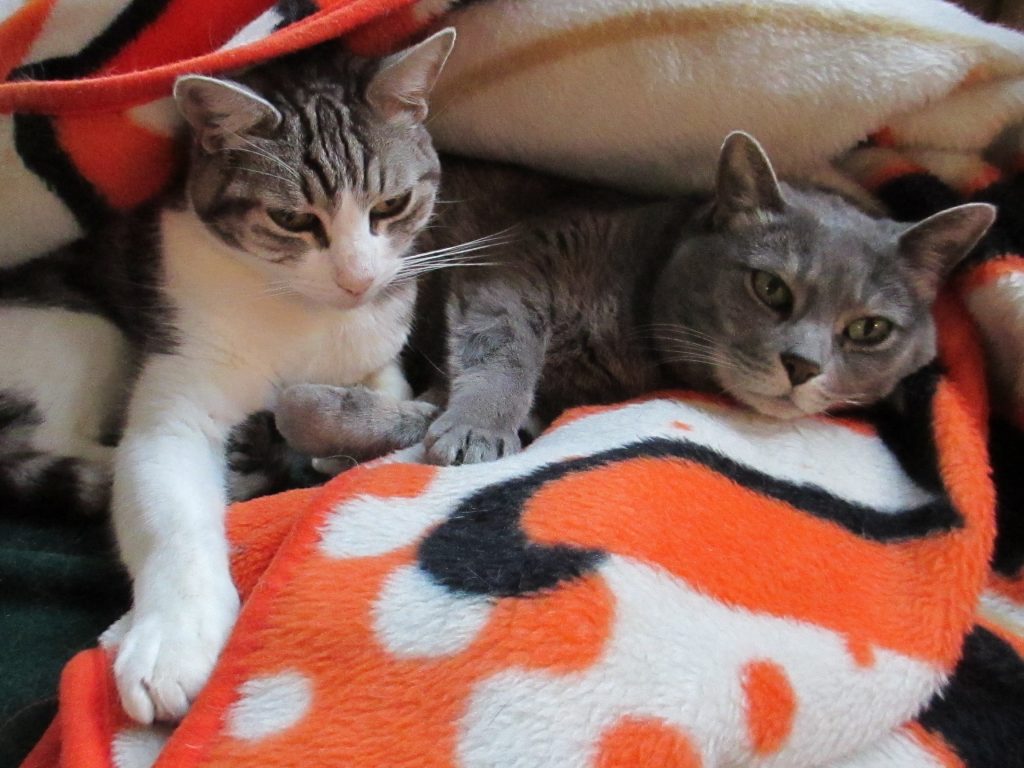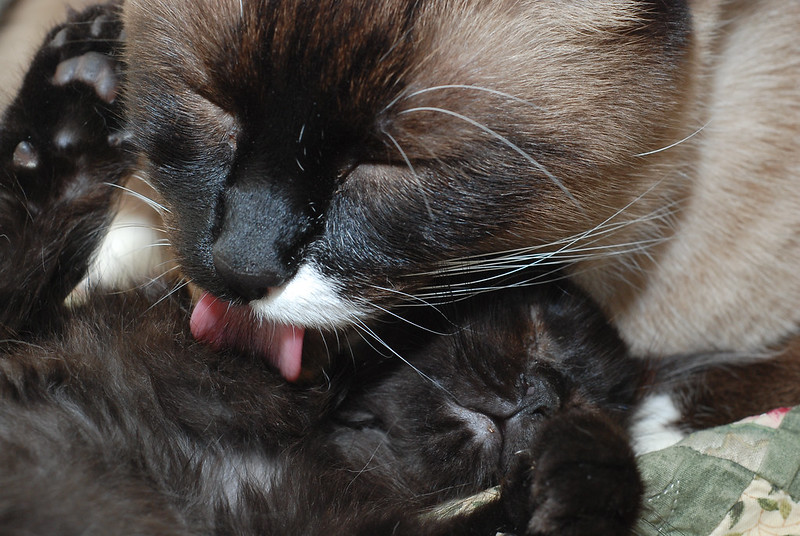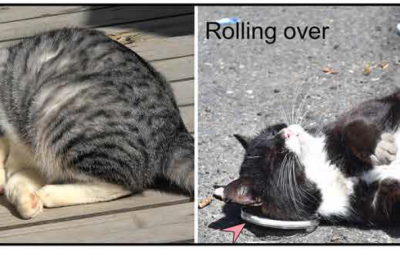Millions of cats share homes with humans, and often also with other cats. Cat behavior problems, such as litter box avoidance and aggression toward other cats in the home, are frequently reported. Their impact on the humans in the home, as well as on the cat, can vary, but behavior problems are a common reason that cats are surrendered to animal shelters and euthanized.
It’s hard not to miss pee on your pillow or a serious catfight – but how well do cat owners recognize more subtle behaviors in their cats? A recent study assessed the reliability of cat owners as conveyors of accurate information about their cats. Veterinarians and cat behavior consultants often must rely on owner descriptions of their cats’ behaviors to assess health and behavior concerns. It follows that it would be especially helpful if the information passed along from owner to practitioner was accurate!
Methods
The study, “What caregivers don’t tell you … A comparison between survey responses and home videos of cat-cat interactions” started by recruiting cat caregivers who had a two-cat household. A total of 42 households, and 84 healthy cats between the ages of 1 and 10 participated in the study.
Owners were asked several questions about their cats, like age, sex and if the cats were related. There were 39 female and 45 male cats in the study. Eleven households had littermates, 1 home had a parent-offspring pair, and 4 houses had cats who were otherwise related. Owners were asked about five specific behaviors they may have observed in their cats:
- Head rubbing: the cat rubs their head against the other cat
- Allogrooming: either cat grooming the other
- Sleeping together
- Tail-up greetings directed toward each other
- Social play including wrestling, chasing, pawing at each other

Participants were asked to specify whether they had observed the behaviors, and could respond “yes,” “no,” or “I don’t know.” Participants who had submitted their surveys were invited to participate in the next stage of the research.
They were asked to submit three videos each of their cats under the following contexts:
- Feeding
- Sleeping
- Playing or fighting
- Any encounter between the cats
The owners could also submit a video of their cats allogrooming, and additional videos if they wanted to provide more context about their cats’ relationship. Being overachievers, most cat owners provided extra videos of their cats, with a total of 775 videos for the researchers to review!
Determining reliability of owner observations
To assess the reliability of cat owners in observing specific behaviors, the researchers compared whether the owner said they saw the behaviors and whether the behaviors were seen on the videos the owners had submitted to the researchers.
The researchers focused on the presence of “false negative” results. A false negative would be a behavior that the owner said they did not observe between their cats, but that could be observed on the submitted videos. It should be noted that the absence of a behavior on the videos cannot prove that the behaviors do not happen, as it is possible that the owners just didn’t capture those specific behaviors during filming.
Results of the study
Owners were most accurate at identifying whether their cats played and slept together, with few false negatives. However, they were less able to reliably report whether their cats showed head rubbing and allogrooming. Of the 16 pairs of cats who showed head rubbing, almost 40% of their owners (6 out of 16) reported that they did not observe these behaviors in their cats. Five out of 30 owners did not recall observing their cats allogroom when allogrooming was clearly present in the submitted videos. When looking at all five behavior categories, about 33% of owners missed at least one behavior that was observed in the home videos.
The results of this study suggest that cat guardians may miss some behaviors happening right under their noses! However, some behaviors were easier for owners to observe in their cats than others – namely whether their cats sleep and play together. Other behaviors may be more subtle, occur less frequently, or occur in shorter periods, making them harder to observe.
Research Takeaways
From this study, we can conclude that some cat owners may experience challenges in observing and describing their cats’ behaviors. This is one reason I like to ask my clients to submit videos of their cats under multiple contexts. Although as the authors of this study admit, even with several videos submitted, it is possible that there were other false negatives – behaviors that the owners didn’t recall seeing, and that they didn’t capture on video, but nonetheless might still happen between their cats.
This study also focused on the presence of behaviors that would be considered indicative of a positive relationship between the cats. But missing behaviors that indicate stress or an adversarial relationship between cats would have a much bigger impact on cat welfare. If a cat is experiencing stress, fear, and anxiety in the home, they must rely on their human to recognize it and seek help.
Cat guardians will likely benefit from targeted education that helps them recognize the presence (and true absence) of behaviors in their cats – especially behaviors and body language or other signals that are relevant to their cats’ well-being.
Clinicians and consultants helping cat owners must also recognize that when gathering information about cats’ behaviors in the home, owners may struggle with accuracy, and some behaviors may be harder for them to observe than others. When working with owners, we may need to collect data in multiple ways (e.g., owner report, video, direct observation) as well as watching videos or looking at cat images together to identify important indicators of their cats’ welfare.
Reference
Van, B., Morgane, J. R., Kmecová, N. G., Tuyttens, F. A., Moons, C. P., Mills, D. S., … & Tiny, C. B. M. (2023). What caregivers don’t tell you A comparison between survey responses and home videos of cat-cat interactions. Applied Animal Behaviour Science, 105993.





One thought on “How well do cat owners observe their cats’ behavior?”